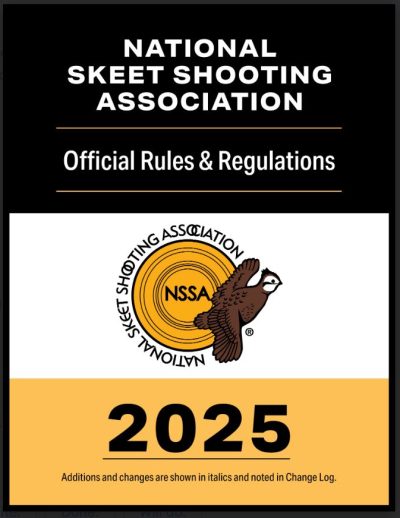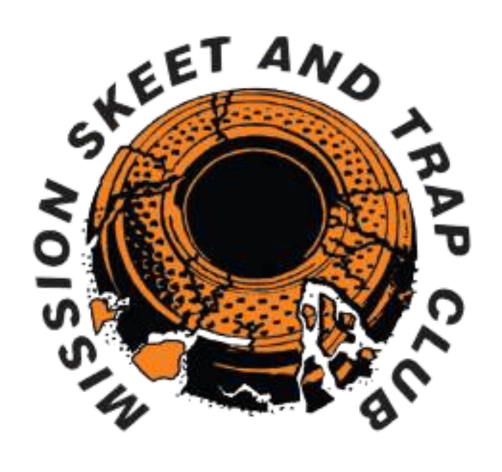SKEET SHOOTING
How Do Trap Shooting, Skeet Shooting, Sporting Clays and Five Stand Differ?
Like driving a golf ball, shooting a shotgun is a skill you can improve with practice. And clay pigeon shooting is the ideal way to get this practice. Through it, you can master your shooting skills. We want you to feel at home at Mission Skeet & Trap Club and let your shooting journey start with us.
There are three major forms of clay pigeon shooting. Each can be found at Mission Skeet & Trap Club as well as shooting clubs around the country. The best clubs like Mission Skeet & Trap Club offer all three as well as a shooting sport called Five Stand.
Trap Shooting
This is the original type of clay pigeon shooting. It began in the 18th century and for decades used live birds. Artificial targets glass balls and then clay discs were introduced in the late 1800s. By the first World War, trap shooting had evolved into the two main ways it’s practiced today.
- American Trap: Practiced at most shooting facilities in the U.S. It uses a single launcher located in a low trap house to throw clay targets away from shooters standing in a line of five stations. The trap house is in front of this line of shooters. As the game progresses each shooter stands at a station, fires at a series of targets (each presented at different angles) and moves right to the next station.
- Olympic Trap: Like American Trap, but instead of using a single launcher, it throws targets from a line of 15 machines, still positioned in front of shooters. Each machine throws clay at a different, but set, angle.
- Double Trap, Wobble trap, Down-the-Line, Bunker trap: Variations of American or Olympic Trap.
Skeet Shooting
Is the second oldest type of clay pigeon shooting. It was created in the early 1920s by a grouse hunter looking to sharpen his skills. In 1926, a shooting magazine introduced the sport to America and offered $100 to anyone who could come up with a name for it. “Skeet”, derived from the Norwegian for “shoot”, won.
There are two types of skeet: American and Olympic. Both use a pair launchers set in two different height towers positioned across from each other. As shooters follow a course from one tower to the other, the launchers throw clay pigeons at a variety of angles designed to simulate the shots upland hunters encounter in the field. Compared to trap, Skeet targets are thrown closer to the shooters and in a wider variety of scenarios.
Sporting Clays
The third major type of clay pigeon shooting and the youngest. Sporting clays was developed in the U.K. and brought to America in 1980. Since then, it has exploded across the country to become one of the most popular shooting sports in the country.
Sporting clays is shot on a course made of 10-15 stations. These stations are laid out one after another, like holes in a golf course. Some stations feature one, two, or more clay-pigeon launchers, all throwing targets at different heights and angles. There are no official rules regarding how these launchers must be positioned, so no two sporting-clays courses are the same.
Compared to trap and skeet, sporting clays offers the widest variety of hunting-style shots. This makes it a great way to sharpen your skills for the season or to keep them sharp all year.
Five Stand
If you were to put trap, skeet, and sporting clays in a blender, Five Stand would pour out. It features a line of five “stands” for shooters and several launchers arranged in front of the shooters, to their sides and even behind them. Shooter is presented five targets at each station, 25 targets in all.
Five stand is more exciting than trap and throws a wider variety of patterns than skeet. It’s faster and cheaper than sporting clays. For hunters, it’s a great game, giving you the chance to work on shots simulating everything from fleeing rabbits and flushing to quail to ducks dropping into a set of decoys. 5-Stand is open to the public Wednesday, Saturday, and Sunday at our club and is super popular.
Skeet Shooting Etiquette
To assist in preparing you for your visit, please familiarize yourself with our rules. Learn these few simple definitions and rules, and then you will be on your way to enjoying one of the venues at the range.
Some of the terminology in skeet shooting can be confusing. The following are common terms:
- Squad — up to five shooters
- Round — refers to 25 clay pigeons/shells
- Bird or target — a clay pigeon
- Pull — when you give a verbal command, such as “pull, heyah, yep” or any other sounds to call for the clay pigeon to be released.
- Stations — The positions at skeet where you will shoot. There are eight stations in skeet. Skeet starts at station 1 which is directly under the high house, and then you work your way around to station 7 by the low house. The round ends at station 8 in the middle between the high and low houses.
- “Green Square” — this is where the puller stands to push the button for a target call
Additional Rules
- All shooters and guests must check in at the shotgun office.
- Safety is our number one priority on the range. The shotgun action must remain, and the gun must be unloaded until you are at the line ready to shoot. Acceptable, safe directions for your muzzle are straight up or downrange (north). Break-action shotguns that are open may have the muzzle pointed toward the ground. Do not walk to the line or change posts with a loaded gun. You must wear eye and ear protection anytime you are on the range — the range is anywhere north of the sidewalk.
- Shell/shot size allowed at Lee Kay: 7½, 8, or 9 with a maximum of 1,330 feet per second. (The smaller the number, the larger the shot size). Any other shot size will carry.
- At skeet, you can load two shells in your gun at all stations except station 8, which only allows one shell at a time.
- Do not load until it is your turn to shoot. Your gun should be empty and open with your hands off your shells until you are standing still on the pad.
- When you are not at a shooting position, your gun needs to be visibly clear and unloaded.
- When changing stations, your gun needs to be unloaded, action open and pointed in a safe direction (see the first bullet point). Never point your gun to either side while moving. Walk around the other shooters to get back in line. Your squad must stay together until it is time to move to the next station. Then you line up a single file behind the station, and the only person on station is the shooter whose turn it is to shoot. Typically, the last person pulls for the person on station shooting. The puller stands on the “green square” to the side of the station.
- Pick up your empty shells. There is a magnet stick on each field for your convenience, please do not take them home.
- A shell bag will make it more enjoyable while you are shooting trap. If you do not have a shell bag, place your shells in your pocket. It is much easier to reach in your pocket than it is to bend over and pick up a shell out of a box on the ground.
- On busy days, be conscientious if other shooters are waiting for a turn to go out. Don’t take a long time to get ready, don’t take breaks or have only one person shoot at a time. Be prepared to start once you are assigned to a field. Our busy days are usually Saturdays and Sundays. On these days, we may ask you to “squad up” with others — a great way to make new shooting friends.
Skeet Target Shooting Sequences
Because you are usually shooting “passing” shots at the targets, you will need to lead the target to hit it. Lead is typically shooting where you expect the target to be. There are many factors in lead and many are found in some of the clay target shooting manuals.
- Station 1 and 2 — High house single, low house single and then a pair with the HIGH HOUSE first. Four shots at each of the two stations.
- Stations 3 through 5 — High house single, low house single. Two shots at each of the three stations.
- Stations 6 and 7 — High house single, low house single and then a pair with the LOW HOUSE of the pair shot first. Four shots at each of the two stations.
- Station 8 — High house single, then low house single. Each shooter will shoot at a target from the high house before any member of the squad shoots at a target from the low house. Only one shell is allowed in the gun. Once everyone has completed their high house shot, the entire squad will turn and the leadoff shooter will shoot at the low house target. If the shooter has not missed any shots at the previous stations, the 25th shot is taken at the low house.
Option: The next shot taken after your first miss — at the time you missed and, on the station/house, you missed from (e.g., low house or high house).
We are looking forward to helping you have a safe, fun, enjoyable experience when you come out to shoot with us. Please familiarize yourself with our rules and let us know if you have any questions.

National Skeet Shooting Association
Official Rules & Regulations 2025
Ready to Aim, Shoot, and Connect?
Begin your journey to shooting excellence at Mission Skeet & Trap Club. Forge lasting friendships, learn from skilled instructors, and experience the thrill of hitting your targets. Join us today and become a valued member!
